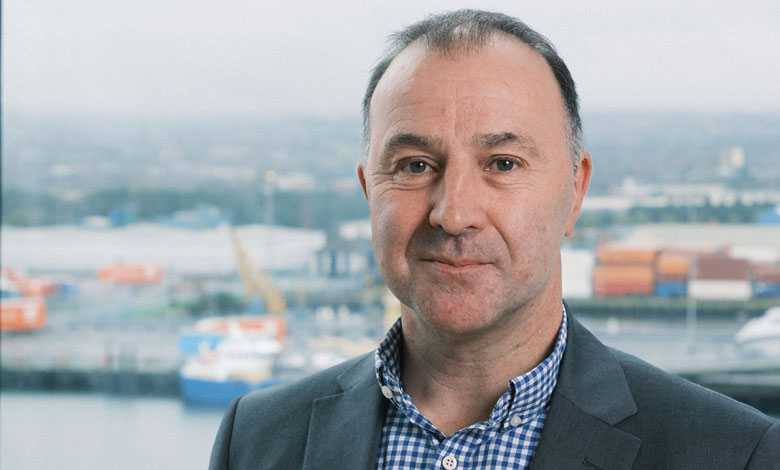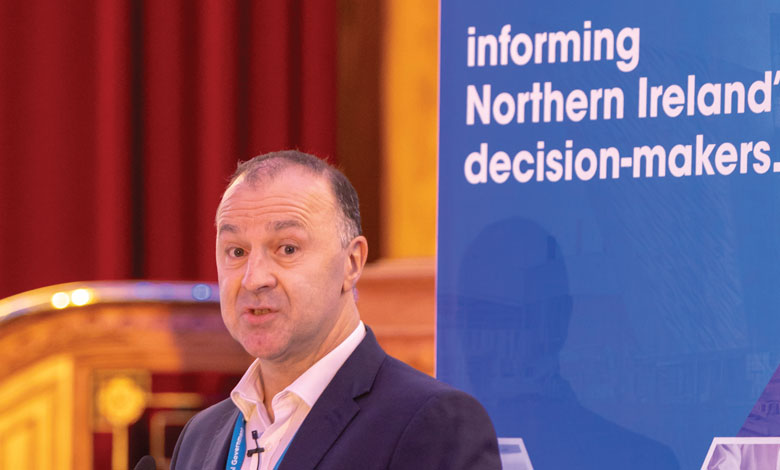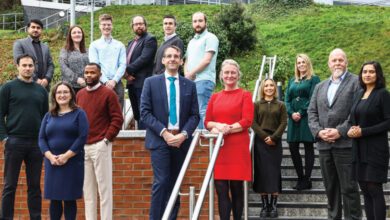Designing and delivering public services in a digital age

Paul Duffy, Deputy Secretary responsible for Digital, Security and Finance Shared Services within the Department of Finance, discusses the opportunities and challenges in transformation of public services through digital.
“The pace of technological change we are experiencing is rapid and accelerating. This rapid growth in technology presents both opportunities and challenges for the delivery of public services,” explains Duffy.
“It requires continuously adapting and innovating to keep up with the evolving technology landscape, and it requires a pace of change – and in some cases, a greater risk appetite – than the public sector has been comfortable with in the past.”
Stressing the changing demand landscape in which public services are being designed and delivered, Duffy explains that many of the early government services that have been digitalised were not primarily based on citizens accessing those services using mobile devices, yet currently, almost 75 per cent of information and services accessed on nidirect are through mobile devices.
“Over the past year, we have seen technological advances, most notably in artificial intelligence, presenting us with new opportunities for innovation and transformation. The way in which citizens wish to consume and access public services is constantly evolving, influenced by the experience of services provided by large commercial platforms, and the services they use in their daily lives.
“The use of single sign-in mobile apps, with personalised content, which is not constrained by organisational boundaries, is what citizens are now expecting. Rising to meet these expectations will require change on a scale that government has never undertaken before.”
Underpinning this challenge has been the sustained growth in both the cost and demand for public services, which Duffy says is placing huge pressure on public finances and undermining service provision due to a lack of investment.
“Many sectors are in critical need of investment and reform to sustain and enhance the quality and efficiency of public services. The strain felt by public services in recent years cannot be fixed easily, even with funding at a level of relative need. For this reason, transformation needs to be prioritised and taken forward in order to deliver the public services people rely on and expect.”
Pointing to the draft Programme for Government’s recognition of the need for more efficient ways of delivering public services, Duffy says: “This will require brave decisions, collaborative working, and a relentless focus on innovation and efficiency in service delivery. This can only be achieved through partnership working, a willingness to accept change, challenges to the status quo, and long-term strategic decisions.”
“We need to find a better balance which allows some degree of risk-taking.”
Transformation programme
The reform and transformation of public services is one of nine “immediate priorities” identified in the draft Programme for Government. Within that pillar, the Executive has pledged to establish a new reform and transformation unit at the heart of government, which Duffy explains will “work across all departments, ensuring priorities get the focus, the resources, and the efficient delivery they need”.
“It will be one part of a reform package, which will include a fiscal framework, a sustainability plan, and a transformation programme,” he states.
Duffy summarises three key elements of the reform programme, namely:
Service delivery transformation: “We need to change how we think about and how we deliver public services within departments, across departments and in partnership with the public, private and community sectors.”
Productivity and digital transformation: “We need to harness new technologies to speed up delivery and lower costs. By designing services to meet user needs, we need to simplify processes and improve performance.”
Innovation and research transformation: “We need to investigate and learn from global best practices, integrating them into our own service delivery approach. This will mean taking a well-judged risk, if needed, to adopt new technologies and try new things.”
He adds: “Reform and transformation cannot just be about money and how it is allocated. Instead, the focus needs to be on what we do, why we do it, and how we do it. This is a challenging ambition, one which will require strong leadership, trusted and capable partners, and a significant shift in culture.”
Enablers
Duffy is keen to stress that while challenges to ambitious transformation exist, there are many opportunities to harness digital technology to improve the lives of citizens and modernise the way government works. This, he states, requires a number of key enablers to be in place.
Elaborating, he says: “There are many examples of multiple departments and public sector bodies who citizens need to inform during a life event, such as moving house or the death of a relative. This fragmentation of service delivery does not meet the needs of citizens.”
While the focus is quite often on designing and delivering digital services, there is a need to address legacy infrastructure. “Outdated systems can be a significant barrier to implementing new technologies. We need to deal with the costly issue of legacy technology, that has been allowed to build up over multiple financial cycles, and is now a barrier to the delivery of policy and services.”
Alongside inaccessible and frequently poor data, inconsistently shared between government departments and public sector bodies, Duffy identifies struggles within the public sector to address a digital skills gap as one of the most challenging enablers.
“There is often a shortage of skilled staff to manage and implement digital initiatives. We are failing to attract top digital talent or to build capacity in-house at scale. We in the civil service need to address the skills gap that we see at all levels and compete more effectively with the private sector for these skills. Otherwise, our lack of skills will continue to hold us back and prevent us from achieving our ambitions.”
Accessibility
Critical to future public services, explains Duffy, is ensuring that services are accessible to all citizens, particularly with opportunities and services increasingly online.
“Digital inclusion is a basic need. If we prioritise digital-first services without addressing the barriers to digital inclusion, it is highly likely to result in increasing inequalities by excluding people who are able to benefit from digital services.
“Those designing services need to recognise the diversity of peoples’ digital capabilities and their ability to access services, and adjust accordingly. This consideration must be made at the outset, and not simply as an add-on after the service has been designed.”
Turning to risk aversion, Duffy recognises that a reluctance to take risks can stifle innovation and progress. Acknowledging the public sector’s “risk averse” label, he highlights the context of an operational environment that does not reward risk-taking, indicating that the levels of scrutiny can drive “the wrong behaviours”.
“While it is right and proper that public servants are held to account for how they spend the public’s money. We need to find a better balance which allows some degree of risk-taking,” he says.
“Our ability to fail fast, learn, and recover, will be essential skills if we are to truly transform how we deliver public services.”
Concluding, Duffy points to the fact that health, which currently consumes 52 per cent of Northern Ireland’s budget, will need more and more funding year on year in the status quo, is evidence of the need to harness digital technology to transform the delivery of services.
In delivering solutions to transformation, he asserts, Northern Ireland has a massive opportunity.
“We do not showcase enough or talk enough about the many excellent services, designed, developed, and delivered here locally. We do not always have to be the followers. In many cases, we can lead the way.
“We only have to look at how we responded to the pandemic, proving that government can work at pace, and in an agile way to meet policy objectives through digital delivery. In that instance, due to the need to deliver at pace, the criticality of the services to be designed, developed and delivered, we operated in a much more responsive way.
“It was interesting to witness how with the need to respond to a crisis that many of our internal controls and approvals were set aside or scaled back, to allow delivery at pace, working in partnership with organisations across all sectors.
“In such a short space of time, we had a fully digital Northern Ireland Identity Assurance solution with a significant uptake from citizens. That solution facilitated access to a number of crucial digital apps designed and deliver at pace by our colleagues in health.
“We also witnessed colleagues in Land and Property Services pivot from collecting rates to designing and delivering a number of business support grants to support the local economy.
“We have many examples here where we are currently delivering digital solutions, utilising the latest technology, such as AI, to improve the delivery of public service, and enhance citizen engagement and participation.
“However, there is much to be done to truly digitalise and transform how we deliver public services, and this can only be delivered again through strong leadership, targeted investment, trusted and capable partners and a significant shift in culture.”






